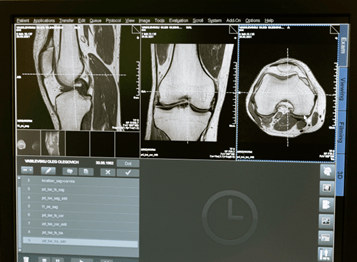
by Belinda | Jul 25, 2022 | Uncategorised
19 – 23 August 2022
Healthy Bones Action Week is a national campaign that runs annually. The aim of this action week is to raise awareness of the importance of maintaining healthy and stronger bone health. It focuses on how your diet, exercise and lifestyle choices can impact your bone health.
There are 206 bones in the body – the smallest bone (stapes) is in our ear and the largest (femur) in our leg.
“An estimated 924,000 Australians have osteoporosis, representing 3.8% of the population.” (Source : AIHW – Australian Institute Of Health and Welfare 2020).
What is bone health and why is it important?
Bone health is an important part of your overall general health. Your bones have many roles within your body. Most of us just think about our bones as a frame or structure but they do more than that. They not only provide structure, but they also protect your main organ’s, anchor muscles and store calcium. Having healthy strong bones are key to leading long, healthy, active, independent lives. Having poor bone health can increase the risk of developing osteoporosis.
Did you know that your bones are continuously changing?
Your bones are living tissues. Up until around the age of 30, your body is continuously going through the process of bone remodelling. This is the process of your body making new bone whilst breaking down old bone. This results in an increase in your bone mass. Once you have reached your peak, (generally around the age of 30) the process continues but you lose slightly more bone mass than you gain. Your risk of developing osteoporosis depends on your peak bone mass. The higher the mass, the less likely you are to develop osteoporosis.
What is osteoporosis?
Osteoporosis, (meaning porous bones), is a long-term (chronic) disease which makes your bones less dense and more fragile, leaving the bones with an increased risk of fractures and breaking
What is osteopenia?
We often hear about osteoporosis but not so much about osteopenia. Osteopenia is the medical name for low bone density or thinning of the bones. If you have been diagnosed with osteopenia, it means that you bones are weaker than normal but not as far gone as they would be if you have osteoporosis. Some people with osteopenia may go on to develop osteoporosis.
What can affect bone health?
There are several risk factors that affect your bone health. Knowing them can help you reduce this risk.
- Family history
- Low calcium and vitamin D levels
- Medical conditions
- History of breaking bones from a minor bump or fall
- Thyroid conditions
- Low levels of physical activity
- Smoking
- Excessive alcohol intake
- Obesity
- Gender
- Age
- Hormone levels
- Medications
Steps you can take now to help build stronger bones:
- Ensure you diet includes plenty of calcium and vitamin D
- Physical activity including weight bearing and strength training exercises
- Healthy eating including vitamin and nutrient rich foods.
- Avoid substance abuse
- Maintain a stable, healthy weight
- Speak to your doctor
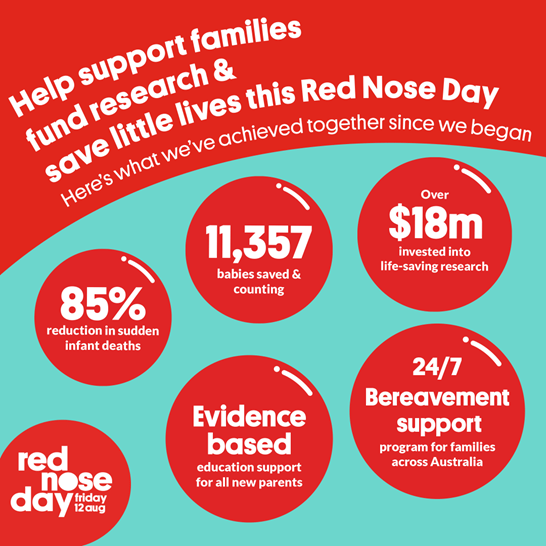
by Belinda | Jul 25, 2022 | Uncategorised
12th August 2022
Each year, on the second Saturday in August, Red Nose Australia holds its national fundraising campaign “Red Nose Day”.
Red Nose Day is major fundraising and awareness campaign to raise money for Sudden Infant Death Syndrome (SIDS). It’s a day when the community comes together by wearing red noses and acting silly to raise money for a good cause.
Since it first began in 1988, the “funds raised on Red Nose Day have resulted in an incredible 85 per cent reduction in sudden infant deaths. That’s 11,357 babies saved and counting.” (Source : Rednoseday.org.au)
What is Sudden Infant Death Syndrome (SIDS)?
SIDS is the sudden, unexplained death of an infant younger than one year old. It usually occurs during sleep.
6 evidence-based steps all parents can take to reduce the risk of their baby dying in their sleep
- Sleep baby on the back from birth
- Sleep baby with head and face uncovered
- Keep baby smoke free before and after birth
- Provide a safe sleeping environment night and day
- Sleep baby in their own safe sleeping place in the same room as an adult care-giver for the first 6 – 12 months
- Breastfeed baby if you can
“By choosing to fundraise on Red Nose Day, you will be making a profound difference for Aussie families and helping to protect little lives. Funds raised support lifesaving education and safe pregnancy programs, free 24/7 counselling and bereavement support services for families, and allow for greater investment in vital research.” (Source : Rednoseday.org.au)
Support families. Fund research. Save little lives.
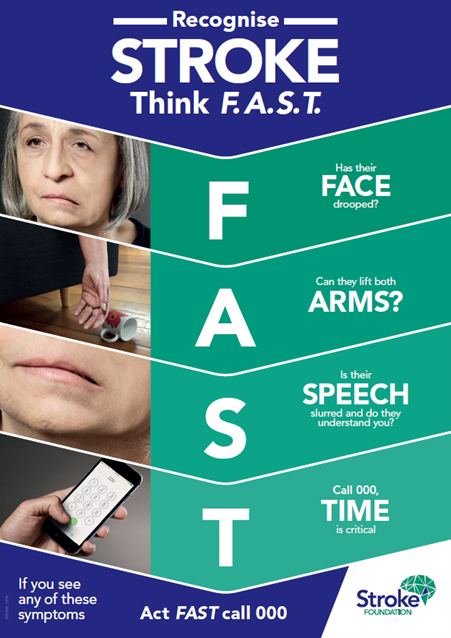
by Belinda | Jul 25, 2022 | Health Assessments
8 – 14th August 2022
In light of National Stroke Week, we thought we’d help simplify for you what strokes are, the warning signs, the effects of a stroke and preventative measures.
“Stroke is one of Australia’s biggest killers and a leading cause of disability, but more than 80% of strokes can be prevented.” (Source: Stroke Foundation)
What is a stroke?
A stroke occurs when the supply of blood to the brain is reduced or blocked completely, which prevents brain tissue from getting oxygen and nutrients. As a result, the brain cells die due to lack of oxygen and nutrients.
There are three types of strokes.
Ischaemic Stroke:
An Ischemic stroke occurs when a blockage cuts off the blood supply to the brain. This can be caused by a blood clot or plaque.
Haemorrhagic Stroke:
A haemorrhagic stroke occurs when a weakened vessel ruptures, causing blood to leak into the brain. This stops the delivery of oxygen and nutrients.
Transient Ischemic Attack (TIA) :
A TIA is also called a warning or ministroke. A transient ischaemic attack occurs when the blood supply to your brain is blocked temporarily. The blockage clears and blood supply to the brain starts again, and the signs of a stroke disappear. TIAs should never be ignored, and you should always call 000 even if symptoms subside as this can be an indication of a larger stroke to come.
How do you know if someone is having a stroke?
The Stroke Foundation recommends the F.A.S.T. test. Think F.A.S.T., act FAST
Face: Check their face. Has their mouth drooped?
Arms: Can they lift both arms?
Speech: Is their speech slurred? Do they understand you?
Time: Is critical. If you see any of these signs call 000 straight away.
A stroke is always a medical emergency.
(Source: Stroke Foundation)
The effects of a stroke:
Every stroke is different. The effects depend on the type of stroke, location of the blocked or burst artery, what part of the brain is damage, etc.
Some problems people who have a stroke may experience include:
- Paralysis – Weakness on one side of the body
- Movement and sensation impairment
- Cognitive impairment (thinking, reasoning, judgement, memory)
- Speech difficulties and understanding
- Behavioral changes and uncontrollable outbursts of emotion
- Seizures
- Problems reading and writing
- Vision loss
- Incontinence
- Fatigue
- Depression
How can you prevent a stroke from occurring?
More than 80% of strokes can be prevented. So, what can you do to reduce your risk of having a stroke? Whilst we have included some lifestyle recommendations below to reduce your risk, there are some risk factors that you can’t do anything about. These include age, family history, gender or already having a prior stroke.
- Book in regular health assessments
- Stay active with regular physical exercise
- Healthy eating
- Decrease the amount of cholesterol and saturated fats in your diet
- Monitor you blood pressure
- Stop smoking
- Drink alcohol in moderation
“It is predicted that without action; by 2050, the number of first-ever strokes experienced by Australians annually will increase to 50,600 or one stroke every 10 minutes.” (Source: Stroke foundation 2020).
For more information about how we can help you with workplace education or health assessments, get in contact with [email protected] or call 0456 387 569.
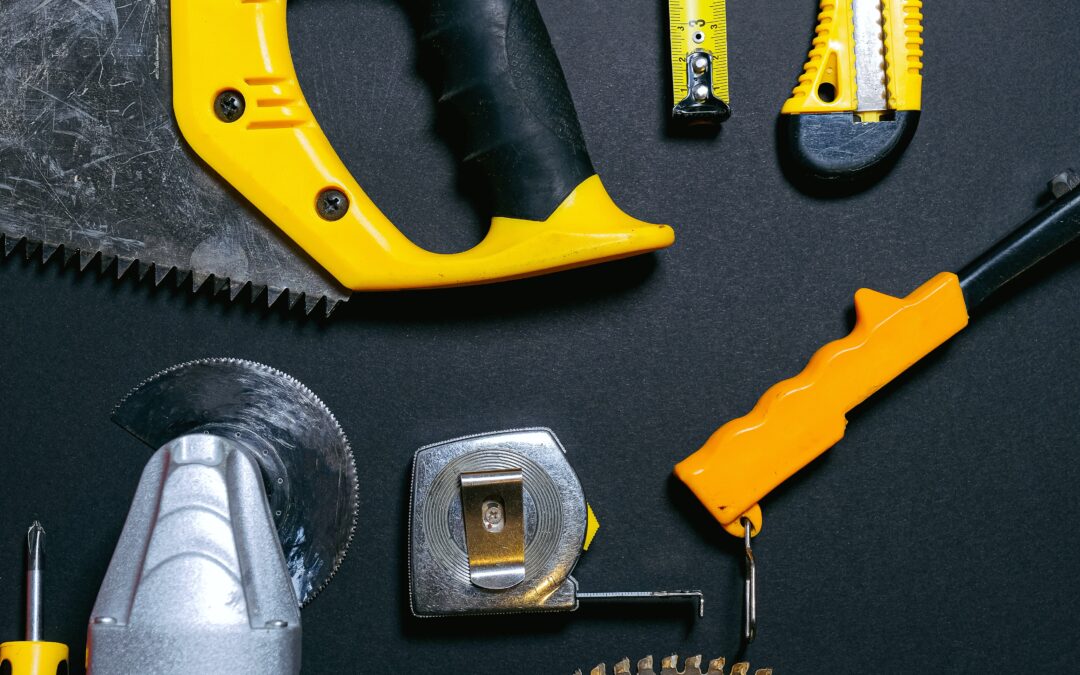
by Belinda | Jul 25, 2022 | Drug & Alcohol Testing, Health Assessments
August is the month to focus on our tradies and their health! Tradies National Health month highlights the importance of tradies health and aims to raise awareness of the health risks affecting those who work in the trade industry.
This August, take the time to think about and prioritise your tradies health. Remember, health and safety are the joint responsibility of employers and employees.
According to Safe Work Australia data, tradies have amongst the highest serious injury and disease compensation claims in Australia. “Labourers, technicians, and machinery operators and drivers are among the top four occupations when it comes to number of serious injury claims.” (Source : Tradies in business.)
Trade Industry Statistics
Tradies reported in a survey that:
- 79% take good care of their tools. Only, 47% take good care of their bodies.
- 25% of tradies felt comfortable talking to co-workers about a mental health issue affecting their work, while 53% were open to discussing physical health concerns.
- 69% believed that it is normal to be sore as a result of the work they do
- 42% pushed their bodies past their healthy limits
- 68% follow safe lifting guidelines
- 60% of tradies often have aches and pains as a result of their job
- Less than a quarter of tradies will “warm up” before starting their day of physical activity.
- 2/3rd of tradies agree they would be more inclined to stretch or warm-up before starting work if their employer prioritised it.
- 3 out of 5 serious workplace injuries involve a tradie-despite making up only 35% of the workforce.
(Source : Tradies Health Survey 2019)
Health Risks
Due to the nature of the industry, tradies are at a higher risk of certain health issues.
- Skin cancer due to being exposed to the sun for extended periods of time
- Hearing Loss due
- Musculoskeletal disorders
- Alcohol and drugs
- Exposure to potentially harmful substances
- Occupational dust diseases
- Back issues
- Psychological pressure
- Depression and mental health
- Greater risk of injury from unsafe lifting
- Physical strain on the body and joints
- Poor nutrition
- Insufficient exercise
𝗛𝗼𝘄 𝗰𝗮𝗻 𝘄𝗲 𝗵𝗲𝗹𝗽 𝘆𝗼𝘂?
At WPH&S Vic we offer a range of services that can help your workplace support your tradies.
- Individual Health Assessments: Screening for heart health, diabetes, cholesterol, and body composition to determine a problem before it’s too late.
- Skin Checks
- Audiometry
- Spirometry
- Drug & alcohol testing and education
- Our dietitians can offer education what foods to eat at certain times of the day to fuel your brain, how to maintain a healthy body weight and basic nutrition for health and wellbeing.
- Our physiotherapists can assist with correct lifting techniques in the workplace, stretches and strength exercises to minimise the risk of workplace injury.
- Physiotherapist assessment
- Our psychologists can assist your team with their mental health.
Get in contact with us to help support your tradies – [email protected] or 0456 387 569.
(Source : Australian Physiotherapy Association.)
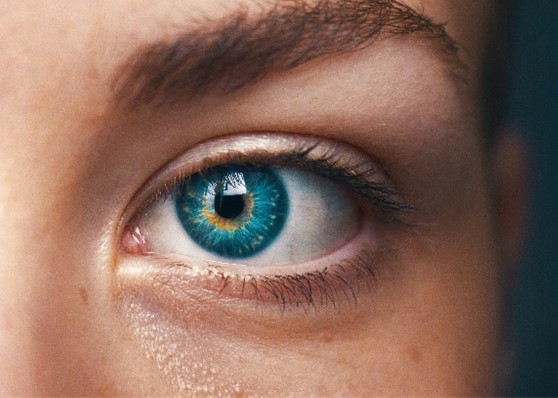
by Belinda | Jul 12, 2022 | Health Assessments, Workplace Education
“75% of vision impairment in Australia is preventable.” – (ABS 21/03/2022) Yet every 65 minutes an Australian loses part or all their vision.
Get your eyes tested this July!
julEYE is The Eye Foundation’s eye health awareness month that takes place during July each year. julEYE has three core aims:
- To raise community awareness of eye health issues.
- To raise funding for research projects into the causes and cures of vision impairment and blindness.
- To support international development projects whose goals are aligned with those of The Foundation.
(Source: Your Health Link, 2021).
The most common causes of vision loss and blindness in Australia are macular degeneration, cataracts, diabetic retinopathy and glaucoma. Many of these conditions are hereditary and can be identified in regular eye checks. (The RANZCO Eye Foundation – www.vision2020australia.org.au )
How often should you get your eyes checked?
According to Vision Australia (2022), regular eye check-ups are recommended for people without eye diseases or specific risk factors every second year with a registered eye care practitioner (optometrist or ophthalmologist).
You may need to get your eyes tested more regularly if you have a health condition such as diabetes, high blood pressure, history of a stroke, neurological conditions or if you have been diagnosed with an eye condition.
How do I protect my eyes?
Good habits for good eye health.
These are our top tips to maintaining healthy eyesight:
- Get regular eye tests – At least every 2 years. Most serious eye conditions are more easily and successfully treated if diagnosed early.
- Maintain a healthy lifestyle – Diets high in anti-oxidants (such as from green leafy vegetables), Omega 3 fatty acids (such as from fish, linseeds), various vitamins (including Vitamins E and C) and minerals (including Zinc and Selenium) can help prevent or slow progression of macular degeneration in some people. Good eating habits combined with exercise help prevent diabetes, which is a significant cause of vision loss in Australia (Vision Australia – 2022)
- Keep in control of your health issues – blood glucose, blood pressure and cholesterol levels.
- Follow advice if you are under the care of an eye health professional
- Prevent digital eyestrain – Staring at a computer or phone screen for too long can cause: eyestrain, blurry vision, trouble focusing at a distance, dry eyes, headaches, neck, back and shoulder pain. Remember to follow the 20/20/20 rule. According to the American Optometric Association, to prevent digital eye strain you should: look at something 20 feet away for 20 seconds every 20 minutes.
- Find out if you’re at risk of eye diseases – Hereditary, family history, lifestyle factors, etc.
- Wear a hat and sunglasses – Protect your eyes from sun damage and make sure your sunglasses meet Australian Standards (protection from UVA and UVB)
- Wear eye protection – Wearing the proper eye protection will prevent injuries from activities such as DIY and certain sports or in a dangerous environment.
- Don’t smoke – Smoking tobacco is directly linked to age-related macular degeneration and many other eye and health problems.
- Be aware of other health conditions and medications that may affect your eyes.




